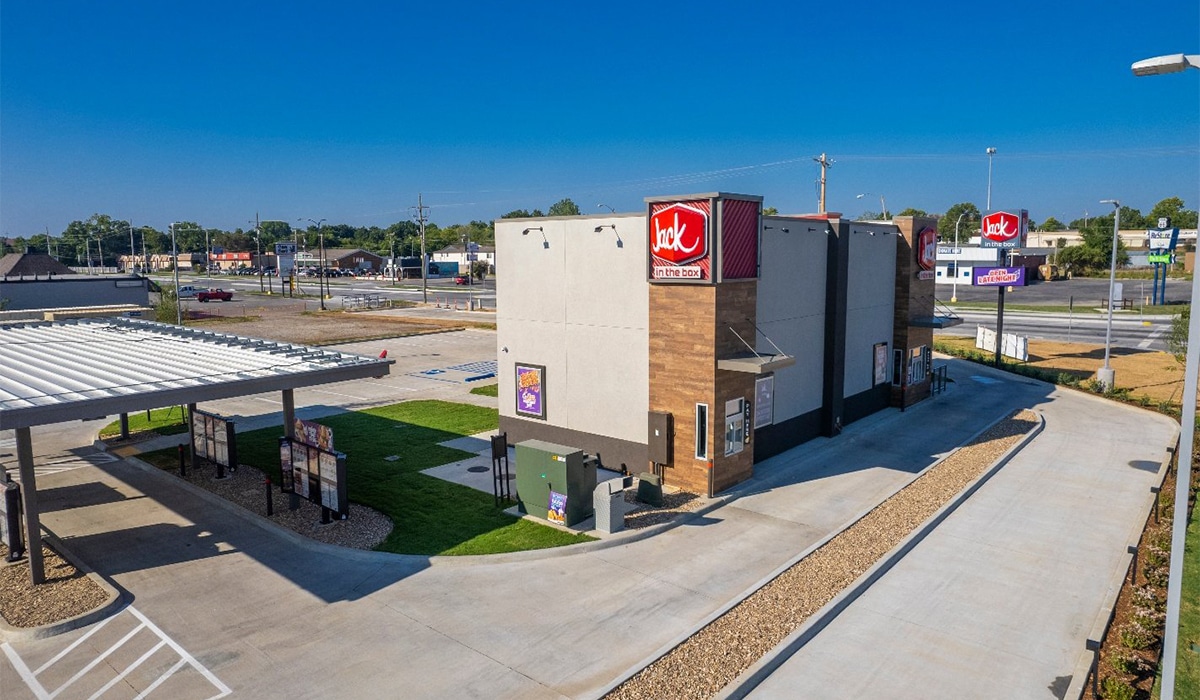Jack in the Box isn’t immune to the struggle of attracting lower-income consumers.
CEO Darin Harris said the guest who earns $75,000 and under—and especially those earning $45,000 and under—are not attaching other items to their order like they used to. McDonald’s said as much during its earnings call earlier in February. Chief executive Chris Kempczinski told analysts that food from home has become more affordable, which has created a “battleground” for the lower-income customer. Wendy’s noted traffic is down for consumers under $75,000 as well.
Jack has multiple levers to pull in response, Harris said. The burger chain has a $3 Jack Wrap, $5 Jack Pack, $10 Fan Favs Box, and $12 Munchie Meals. The brand plans to launch an improved value menu, which promises to provide “a variety of value for the budget-conscious guest.” Meanwhile, Jack will keep using its digital channels to send targeted offers to loyal customers in the app, like its two tacos for 99-cent deal.
“Our focus is, how do we make sure that we have the right breakfast offerings, the right offerings and deals through digital channels, that we have the right value menu?” Harris rhetorically asked during Jack’s Q1 earnings call. “So our focus is about making sure we understand our consumers by all segments and dayparts.”
A big focus for Jack is late night—a daypart in which it owns a lot of equity. The chain has seen positive transactions year-over-year for the sixth straight quarter. The aforementioned Munchie Meals were a “very solid contributor” to Q1 sales, Harris noted.
“We’re very aware of what the competition is doing, and we want to make sure that we continue to own late night, which we’ve done for years,” the CEO said. “And so I think we have the right offerings at the right time. And so we know that the competition wants to challenge us, and so we’ll be ready for it through innovation and other marketing opportunities that we see available at late night.”
READ MORE:
Jack in the Box Believes it’s a Challenger, but that’s Changing Soon
Why Customers Love Jack in the Box’s New Smashed Jack
Jack forecasted 6 to 8 percent pricing for fiscal 2024. Harris said the increase is more about company-owned stores catching up from a pricing standpoint relative to its peers. Franchisees are currently priced in line with the competition. However, the CEO does see room for operators to bump up their menu prices in California, where AB 1228—the new fast-food law that will increase minimum wage to $20 for quick-service employees—will go into effect in April. Harris said another 2 to 3 percent of additional price could happen heading into that month.
Jack’s same-store sales increased 0.8 percent in Q1, comprised of franchise comps of 0.7 percent and company growth of 2 percent. Both sides experienced growth in average check, declines in transactions, and negative weather impact toward the end of the quarter. Restaurant-level margin was 23.1 percent, up from 19.8 percent a year ago, fueled mostly by commodity deflation and sales leverage.
The chain has trended slightly negative to start February, more than expected. CFO Brian Scott thinks this may be indicative of the industry overall instead of issues specifically related to Jack. The company foresees a return to positivity once it takes action to attract the value guest and it can bring back the Smashed Jack, a premium burger that quickly sold out in January despite a soft launch.
“I think from a differentiation standpoint, Smashed Jack is that differentiated and that much tastier than a lot of what’s out there in the marketplace,” Harris said. “So we feel really good about what Smashed Jack can do to our business. So I think it does have the ability to overcome some of the challenges that we see with the consumer just because the product is so good. That’s what we saw in test. It’s what we saw in our soft launch. And we believe that it can help us throughout the year really outperform what we anticipate with some of the headwinds that we’re facing right now.”
The brand finished Q1 with 2,192 stores nationwide, a net increase of six units compared to a year ago. Looking ahead, Jack has 91 signed development agreements for 399 future restaurants. It currently has 81 units in construction or permitting phases.
As for sister concept Del Taco, Harris said brand insights show the chain can “win on value versus the competition,” and that’s by offering more food for customers’ money in addition to lower price points. The company is currently gathering learnings from a menu redesign initiative, which is expected to drive sales and margin improvement. One of the priorities is improving Del Taco’s breakfast share. Harris believes this will be accomplished via three tactics: making breakfast a recurring part of the marketing calendar, innovating around new items while rolling out fan-favorite LTOs like French Toast Sticks and Mini Cinnis, and testing new offers through digital channels to reengage guests.
“We will utilize the hook and build strategy and lead with value while growing average check in a healthy way via upsell,” Harris said.
Del Taco’s same-store sales lifted 2.2 percent in the first quarter, including 2.4 percent franchise comps growth and a 1.8 percent corporate increase. Sales were boosted by average check via menu pricing, partially offset by changes in menu mix and transaction declines. Del Taco ended the first quarter with 592 restaurants, including 421 franchises and 171 corporate locations. There are 155 development agreements in place and 49 sites in construction or permitting phases.








